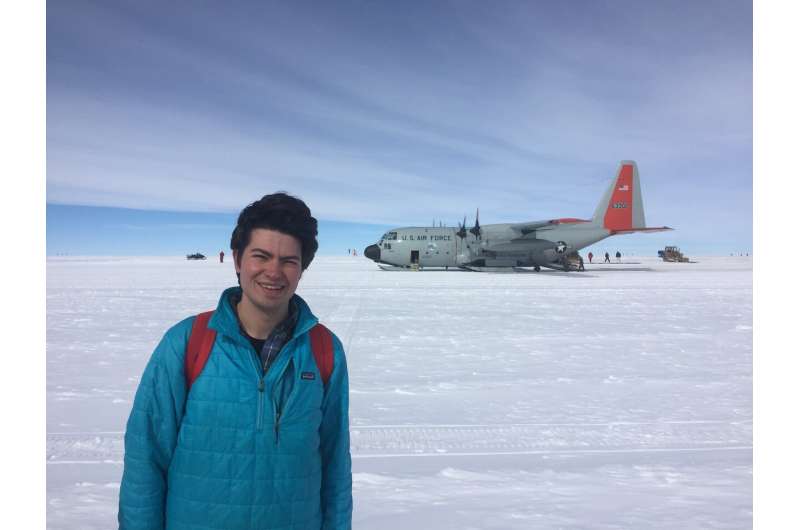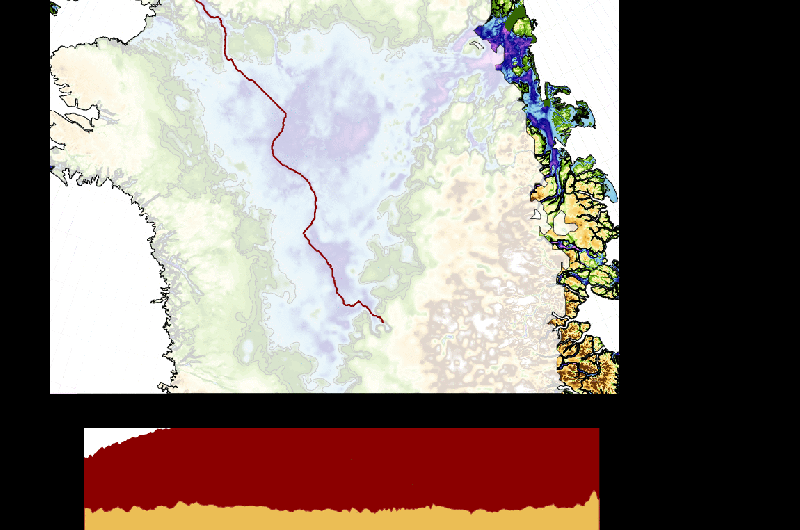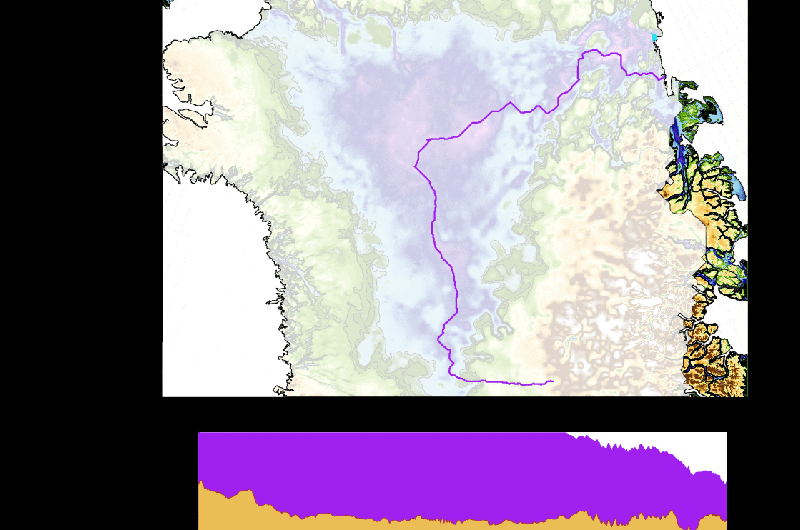Will the Grand Canyon Flood Again

Buried a mile below Greenland's thick water ice canvas is a network of canyons and so deep and long that the largest of these has been chosen Greenland's "Thou Canyon." This megacanyon'south shape suggests it was carved by running water prior to widespread glaciation, only exactly when and how the island's grandest canyon formed are topics of intense argue.
Now scientists from the U.S. and Kingdom of denmark are proposing a surprising new hypothesis for the megacanyon'due south formation: catastrophic "burst" floods that suddenly and repeatedly drained big meltwater-filled lakes. The findings, published this week in the journal Geology, also suggest that Greenland's subglacial coulee network has influenced the island's ice sheet since its inception.
Although repeated outburst floods have been suggested as the mechanism by which the Columbia River and other North America coulee networks formed, they had not previously been considered as the source of the remarkable landscape hidden below the Greenland Ice Sheet, says Benjamin Keisling, the study's lead writer and a sometime graduate educatee at the University of the Massachusetts, who also collaborated with researchers at Denmark'due south Heart for Ice and Climate during a National Science Foundation Grow fellowship.
"If the floods we suggest occurred, they could have influenced ocean apportionment, causing precipitous climate changes with regional and perhaps global significance," says Keisling, at present a postdoctoral beau at Lamont-Doherty Earth Observatory. "The megacanyon beneath northern Greenland also influences how ice and h2o flow in the subglacial environment today, which affects present-day ice-canvass stability," he says.

A Different Arroyo
In most studies of Greenland, researchers utilise the modern water ice sheet as a starting betoken for agreement how it has changed over time. Merely for this study, Keisling and his co-authors decided on a dissimilar approach: investigating what Greenland looked like prior to widespread glaciation. "We wanted to better empathize the dynamics of 'glacial inception'—how, where, and why the water ice canvass commencement grew on an ice-complimentary island," he says.
The team likewise wanted to gain insights into how the ice canvass grew dorsum subsequently melting. "We know from prior work this has happened multiple times in the past and could again in the future, given plenty global warming," says Keisling.
The researchers used coupled ice-sheet and climate models to simulate the Greenland Ice Sheet's evolution over multiple glacial-interglacial cycles during the global cooling from the Pliocene into the Pleistocene, ii.58 million years ago. They found that following long periods with stable temperatures, an uncommonly warm flow could crusade the ice sheet to retreat quickly. This melting led to the development of large, ice-dammed lakes in areas where the boulder was all the same depressed due to the onetime water ice sheet's weight.
The simulations somewhen show the ice dams give manner, leading to large outburst floods. "Over fourth dimension," says Keisling, "information technology appears that the filling and draining of these lakes as the ice repeatedly retreated and advanced carved Greenland'due south megacanyons." Similar floods have been documented at the edge of other retreating ice sheets, he says.

Water ice-Sheet Stability: Past, Present, and Futurity
Based on comparisons with modernistic outburst floods, the researchers estimate that information technology took tens to hundreds of these events to carve Greenland's largest canyon. According to Keisling, widespread sediment degradation in the water-filled basins may have as well impacted the ice canvas's behavior each time it grew dorsum.
Ultimately, Keisling says, the written report results signal to testable hypotheses that can guide future research to finally settle the ongoing argue nearly whether the Greenland Ice Sheet's stability has changed over time. "Knowing the history of Greenland's bedrock provides context for understanding the ice sheet's long-term behavior," he says. "This helps paint a motion-picture show of what happened during past warm periods when the melting water ice sheet caused global bounding main levels to ascent—a phenomenon we are also seeing today."
More information: Benjamin A. Keisling et al, Pliocene–Pleistocene megafloods equally a mechanism for Greenlandic megacanyon formation, Geology (2020). DOI: 10.1130/G47253.1
Citation: Catastrophic outburst floods carved Greenland's 'Yard Canyon' (2020, April thirty) retrieved 21 May 2022 from https://phys.org/news/2020-04-catastrophic-outburst-greenland-grand-coulee.html
This document is subject to copyright. Apart from any fair dealing for the purpose of private report or inquiry, no role may be reproduced without the written permission. The content is provided for information purposes only.
williamsackelvel60.blogspot.com
Source: https://phys.org/news/2020-04-catastrophic-outburst-greenland-grand-canyon.html
0 Response to "Will the Grand Canyon Flood Again"
Postar um comentário